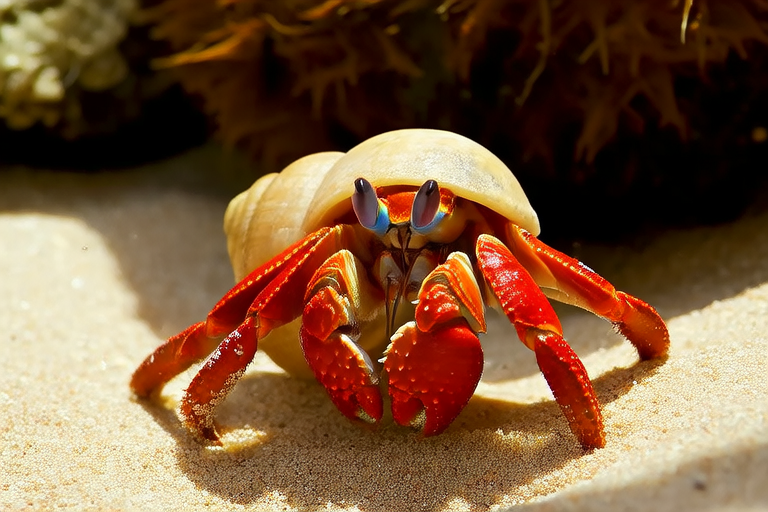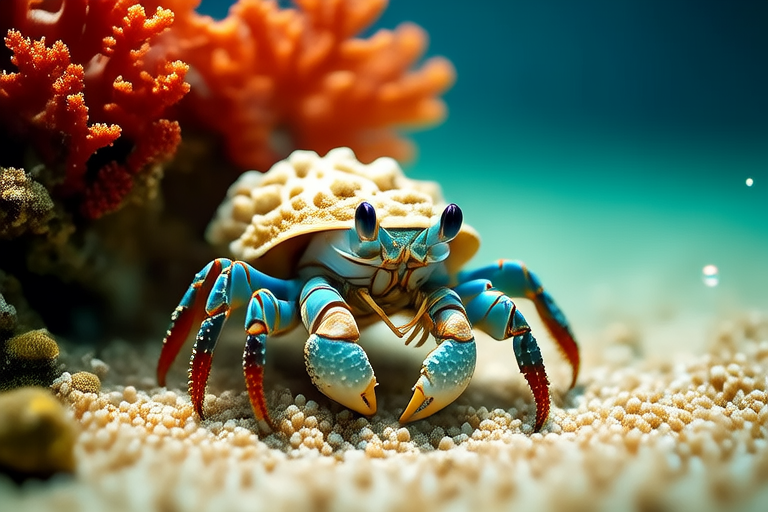
The Ultimate Guide to Hermit Crab Care: Tips for Happy and Healthy Crustaceans
Welcome to the world of hermit crabs! These fascinating creatures are not only unique but also make wonderful pets. Hermit crabs are decapod crustaceans that have adapted to live in empty seashells, which they carry around as protection. They are social animals that thrive in groups, making them ideal companions for those who want a low-maintenance yet engaging pet.
Introduction to Hermit Crabs
Hermit crabs are native to tropical and subtropical regions across the globe, including the Caribbean, Central America, and parts of Asia. They are typically found near the coast, where they can access both land and sea environments. In their natural habitats, hermit crabs live in colonies, often sharing burrows or living in close proximity to one another.
Hermit crabs are nocturnal, meaning they are most active during the night. They are known for their playful behavior and curious nature, making them delightful pets to observe. They are also relatively easy to care for, requiring minimal space and attention compared to other exotic pets.
Setting Up the Perfect Habitat
Substrate
The substrate, or bedding material, is crucial for hermit crab comfort and health. Coconut fiber or crushed coral is recommended as it provides the right balance of moisture retention and drainage. The substrate should be at least two inches deep to allow your crabs to dig and bury themselves.
Temperature
Hermit crabs require a warm environment to thrive. The optimal temperature range for hermit crabs is between 75°F and 85°F (24°C to 29°C). A heat lamp or under-tank heater can be used to maintain this temperature, ensuring your crabs stay comfortable.
Humidity
Maintaining the correct humidity level is essential for hermit crabs. They need a humidity level of 70% to 80%. This can be achieved by misting the tank daily or using a humidifier. It’s important to monitor the humidity levels regularly, as too much or too little moisture can harm your crabs.
Lighting
Hermit crabs are nocturnal, so they don’t require bright lights. However, providing a UVB light source can help them synthesize vitamin D3, which is vital for calcium absorption. Ensure the light is placed outside the tank to avoid overheating.
Proper Diet
A balanced diet is key to keeping hermit crabs healthy. Their diet should include a variety of fruits, vegetables, proteins, and calcium supplements. Suitable foods include bananas, apples, carrots, and leafy greens. Additionally, provide protein sources such as fish flakes or small pieces of cooked chicken.
It’s important to feed your hermit crabs in moderation and remove any uneaten food within 24 hours to prevent mold growth. Providing a shallow dish filled with fresh water is also necessary for hydration.
Safe and Enriching Environment
To ensure your hermit crabs have a stimulating environment, include various toys and climbing structures. PVC pipes, branches, and small rocks can serve as climbing structures, while small dishes filled with sand or water can offer entertainment. Providing multiple shells of varying sizes allows your crabs to change homes when needed.
Hiding spots are essential for hermit crabs to feel secure. You can create these using coconut huts, cork bark, or even cardboard boxes. Make sure there are enough hiding spots for all the crabs in your tank to avoid stress.
Common Health Issues and Maintaining Good Health
Like any pet, hermit crabs can experience health issues. Common problems include shell rot, molting complications, and parasitic infections. Signs of illness include lethargy, loss of appetite, and unusual behavior.
To maintain good health, regularly clean the tank and monitor the humidity and temperature levels. Quarantine any new crabs before introducing them to the main tank to prevent the spread of diseases. Providing a balanced diet and appropriate environmental conditions will help keep your hermit crabs healthy and happy.
Handling and Interacting Safely
When handling hermit crabs, always support their entire body and avoid grabbing them by the shell. Use gentle, slow movements to avoid startling them. It’s best to interact with your crabs when they are awake and active, usually during the evening or night.
Respect your hermit crabs’ boundaries and avoid overhandling, as excessive handling can cause stress. If you notice signs of stress, such as hiding or refusing food, give your crabs some time to settle down.
Ongoing Care and Monitoring
Regularly check the tank’s humidity and temperature levels to ensure they remain within the optimal range. Clean the substrate every few weeks and replace any damaged toys or structures. Monitor your crabs’ behavior and weight to ensure they are thriving.
Keep an eye out for signs of molting, which is a natural process where hermit crabs shed their exoskeleton. During this time, crabs may become reclusive and stop eating. Provide a hiding spot filled with moist substrate to aid in the molting process.
By following these guidelines, you can provide a safe, enriching, and healthy environment for your hermit crabs. With proper care, these fascinating creatures can bring joy and companionship to your home for many years.




